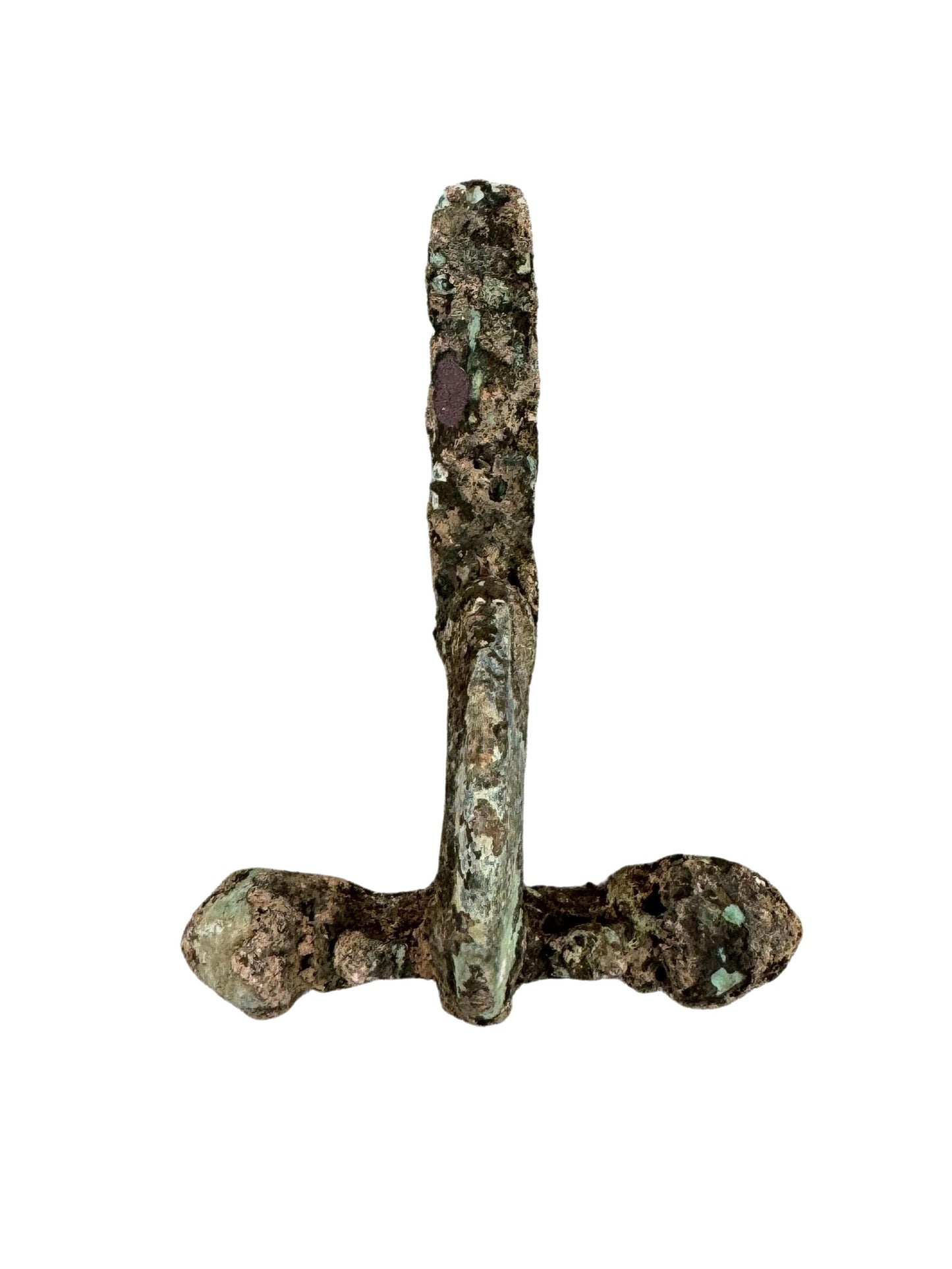


Bronze Roman Cross Bow Shaped Fibula Brooch
Bronze Roman Cross Bow Shaped Fibula Brooch

Roman Period 200 -300 CE Found in the Holy Land Comes with a Certificate of Authenticity Export Approval Issued by the Israel Antiquities Authority Authorized Antiquities Dealer Since 1988
Couldn't load pickup availability



-
#1 Choice for Holy Land Jewelry
Our quality is like no other - luxurious! -
Money-back guarantee
To ensure your satisfaction - or your money back. -
Worldwide Shipping
From the heart of Jerusalem to your doorstep!
Product Details
Roman Period 200 -300 CE. 3.” Inches By 2.25” Inches.
Made out of bronze in crossbow shape, in very good condition. Traces of gold plating are present over the body.
In antiquity, fibulae were originally used for fastening garments, particularly cloaks, and served both a decorative and practical purpose. The brooches came in a variety of shapes, but all were based on the safety pin principle. The crossbow design reached the height of its popularity both in Italy and in the Western European provinces at a later stage in the Empire’s history. Worn almost exclusively by men, the crossbow brooch came to represent civil and military authority, with famous Roman generals, such as Stilicho, having been depicted wearing crossbow fibulae. They were the basis for more complicated and highly decorated brooches, modelled in bronze, silver and gold and further enriched with precious and semi-precious gemstones. Simpler versions made with cheaper materials were then popularised by Roman soldiers, thus allowing for their spread into the provinces where they became a staple of Romano-Celtic fibula design. Fibulae are the most common artefact-type in burials and settlements throughout much of the continental Europe, though by the Middle Ages, the Roman safety pin type of fibula had fallen into disuse.




